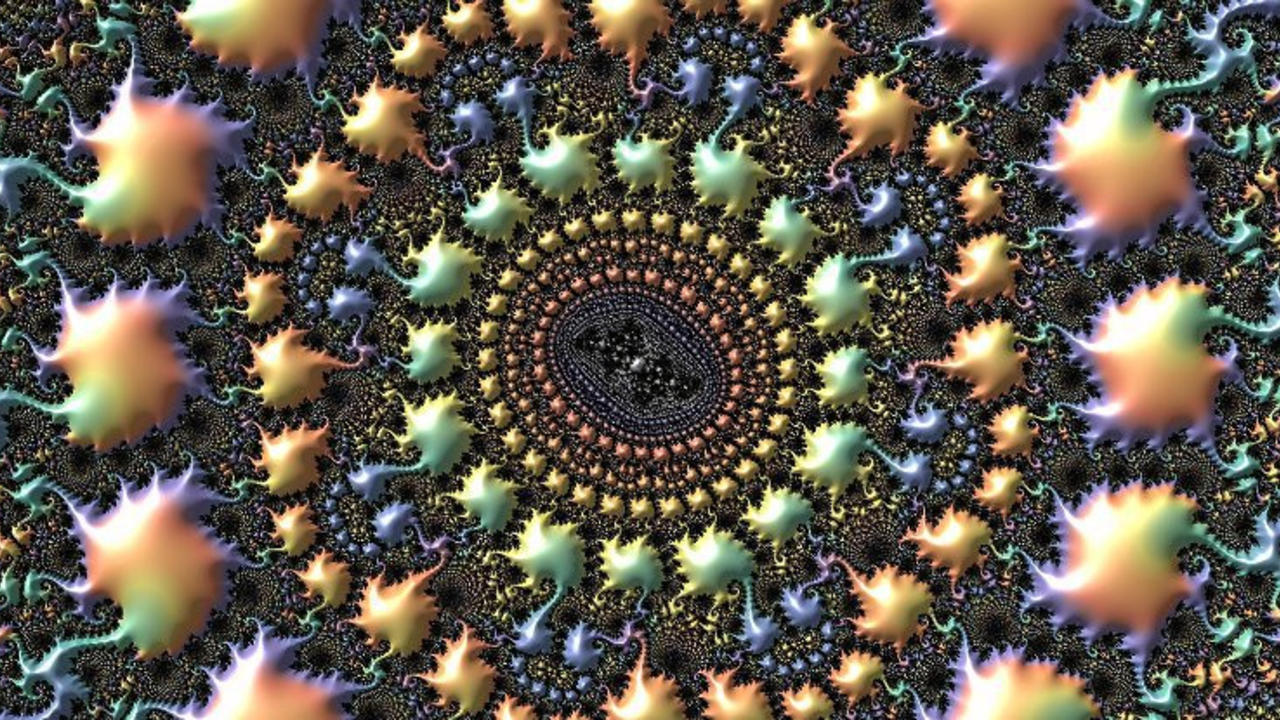Science News
& Faculty Articles
Chiral Water Super-Structure Forms Around DNA

RSF Science News Article
Static Orbits in Rotating Spacetimes: Detection may Reveal Key Characteristics of Black Holes

Article by Lisa Zyga
When a massive astrophysical object, such as a boson star or black hole, rotates, it can cause the surrounding spacetime to rotate along with it due to the effect of frame dragging. In a new paper, physicists have shown that a particle with just the right properties may stand perfectly still in a rotating spacetime if it occupies a "static orbit"—a ring of points located a critical distance from the center of the rotating spacetime.
The physicists, Lucas G. Collodel, Burkhard Kleihaus, and Jutta Kunz, at the University of Oldenburg in Germany, have published a paper in which they propose the existence of static orbits in rotating spacetimes in a recent issue of Physical Review Letters.
"Our work presents with extreme simplicity a long-ignored feature of certain spacetimes that is quite counterintuitive," Collodel told Phys.org. "General relativity has been around for a bit more than a hundred years now and it never ceases to amaze, and exploring...
Brain is Far More Flexible Than Conventionally Thought

Study suggests balance between preserving memories and integrating new learning
By Greta Friar, Harvard Medical School Communications
The human brain has a region of cells responsible for linking sensory cues to actions and behaviors and cataloging the link as a memory. Cells that form these links have been deemed highly stable and fixed.
Now, the findings of a Harvard Medical School (HMS) study conducted in mice challenge that model, revealing that the neurons responsible for such tasks may be less stable, yet more flexible than previously believed.
The results, published Aug. 17 in the journal Cell, cast doubt on the traditional notion that memory formation involves hardwiring information into the brain in a fixed and highly stable pattern.
The researchers say their results point to a critical plasticity in neuronal networks that ensures easier integration of new information. Such plasticity allows neuronal networks to more easily incorporate new learning, eliminating the need...
The Origin of Metabolism

RSF Science News Article
A big question in science is how life emerged from ostensibly abiotic environments. What demarcates the transition from prebiotic matter to living systems? What environments could have fostered such complex chemical circuitry? Life is supported on three primary pillars: (1) replication – a molecular system capable of encoding information, most importantly its own reproduction; (2) Synthesis – the molecular machinery to read and execute encoded information to assemble new parts and replicate; and (3) Metabolism – the ability to extract energy from the environment to drive far-from equilibrium processes including chemical synthesis of molecular “building blocks”.
A popular explanation for the emergence of the first chemical replicators is known as the ‘RNA world hypothesis’. Ribonucleic acid is a polymer that is capable of encoding information in its nucleic acid sequence, and performing enzymatic catalysis – it...
Metamaterial That Bends, Shapes, and Focuses Sound Waves

Article by William Brown, Biophysicist, Resonance Science Foundation Research Scientist
Metamaterials are a class of super-materials with remarkable characteristics. Metamaterials have been engineered to bend and shape light, providing an effective invisibility cloak.
Time Crystals – A New Phase of Matter

By Resonance Science Foundation Research Scientists
The mechanism underlying the formation of crystals is the breaking of symmetry in the spatial domain. Also responsible for phase transitions between liquid and solid it has long been associated with a system in equilibrium – that is a system in its ground state.
However, two independent teams of scientists have recently confirmed the existence of crystals in a non-equilibrium state – known as time crystals. Predicted in 2012 by Nobel Laureate Frank Wilczek these systems break symmetry in the time domain – where they show periodicities at an emergent sub-harmonic frequency and are robust to external perturbations. Could this be a resonant frequency of the quantum vacuum?
The basic idea of a time crystal is relatively straight-forward. A crystalline medium has a periodic, or regularly repeating structure. However, because of entropic considerations (forcing the substance into its lowest energy state) the crystal...









Researchers at the University of Notre Dame have observed for the first time a chiral water superstructure templated around a biomolecule. Although many studies have demonstrated the direct interaction of water with highly important macromolecules like DNA, the latest study is a final confirmation that water forms a unique and enduring super-structure around the DNA double helix -- stabilizing the molecular conformation, mediating its functionality and interaction with important information intermediaries like RNA polymerase.
Taken in consideration with other recent reports, such as the direct mapping of molecular couplings and energy exchange between DNA backbone vibrations and water with femtosecond infrared spectroscopy, it is becoming increasingly difficult to ignore the central role of water in some of the most important of biological functions. Water forms hydration patterns around biomolecules via hydrogen bond interactions -- and is...